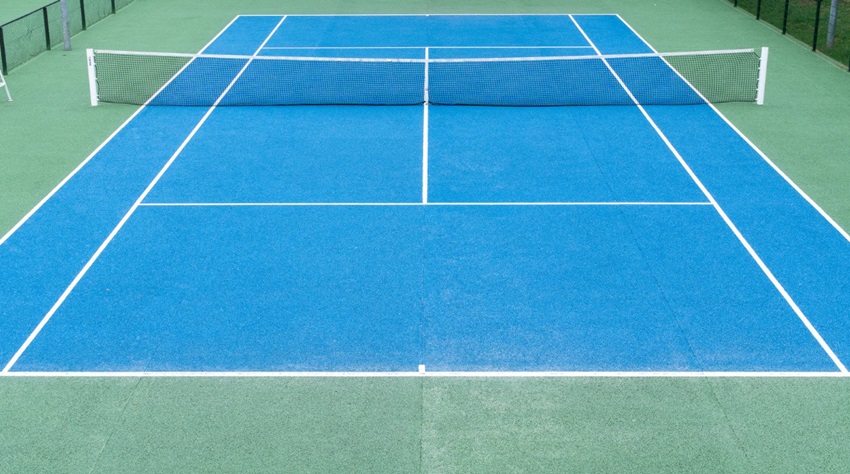Tennis courts are exposed to the elements year-round, and weather conditions significantly influence their performance, durability, and upkeep. Factors such as temperature, humidity, rain, and wind affect both playability and maintenance routines. Ensuring courts remain in top condition requires expertise, which is why working with tennis court contractors in South Carolina is essential for quality construction and long-term care. Understanding how different weather conditions impact a court helps in making informed decisions regarding materials, maintenance, and scheduling repairs.
The Effects of Weather on Tennis Court Performance
Weather conditions can directly impact the speed, bounce, and overall quality of a tennis court. Players may notice changes in traction, ball response, and surface integrity due to varying environmental factors.
Heat and UV Exposure
Extreme heat and prolonged sun exposure can cause significant wear and tear on tennis courts. The effects include:
- Expansion and contraction of court materials, leading to cracks and surface damage.
- Fading and deterioration of acrylic coatings on hard courts.
- Increased ball speed and decreased bounce height due to surface hardening.
Regular inspections and resurfacing can mitigate the impact of intense sunlight, ensuring the court remains in optimal condition.
Rain and Moisture
Water accumulation is a primary concern for both hard and clay courts. Moisture-related issues include:
- Puddling and water retention lead to surface weakening.
- Moss and algae growth can create slippery and unsafe playing conditions.
- Soil erosion underneath clay or grass courts affects stability and drainage.
Proper drainage systems and professional sealing treatments are necessary to protect courts from water damage. Before hiring a contractor, it’s crucial to consider questions to ask before hiring a tennis court contractor to ensure expertise in managing weather-related concerns.
How Weather Affects Tennis Court Maintenance
Maintenance practices must adapt to seasonal changes to prevent long-term damage and maintain playability.
Winter and Freezing Temperatures
Cold temperatures and freezing conditions can cause:
- Cracking and heaving in asphalt and concrete courts due to frost expansion.
- Hardening of clay courts, making them less playable.
- Ice formation, leading to safety hazards.
Winterizing courts before the cold season and performing necessary repairs in spring can prevent extensive damage.
Wind and Debris
Windstorms can introduce debris, including leaves, dirt, and branches, onto the court surface. This can lead to:
- Abrasion and minor surface damage over time.
- Drainage blockages, increasing water-related issues.
- Safety concerns due to scattered debris affecting playability.
Regular cleaning and the use of windbreaks or fencing help minimize these issues and extend the lifespan of the court.
The Importance of Professional Tennis Court Maintenance
Weather impacts cannot be avoided, but professional maintenance ensures courts remain in peak condition regardless of climate conditions. Experts utilize proper materials, advanced techniques, and specialized equipment to combat weather-related wear and tear. For a deeper understanding of how weather conditions affect tennis court construction and maintenance, it’s essential to consider the role of climate in long-term court preservation.
Conclusion
Weather conditions play a crucial role in determining the performance and maintenance requirements of a tennis court. From intense sunlight to heavy rain and freezing temperatures, each element poses unique challenges. Professional maintenance and expert construction techniques ensure courts withstand these factors while remaining safe and playable. By working with experienced contractors and prioritizing weather-appropriate care, court owners can protect their investment and provide an optimal playing surface year-round.


Fascinating Benefits of Adding Plants to Your Pond
Your pond serves vital environmental functions for both aquatic vegetation and fish populations and fish and serves as an important aesthetic element in your garden. Proper pond maintenance is crucial because neglected ponds develop murkiness while growing excessive algae along with bothersome odours that end up reducing their visual appeal. You can preserve the clear […]